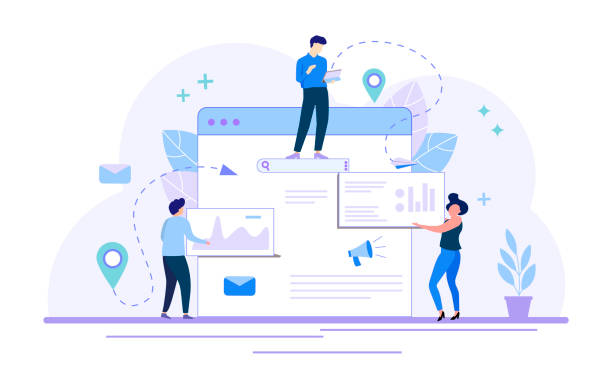Introduction to SEO-Optimized Website Design and Its Importance

In today’s digital world, simply having a website is not enough.
Your website must be searchable and able to attract your target audience.
This is where the concept of #SEO-optimized website design becomes important.
SEO, or Search Engine Optimization, is the process that prepares your website to achieve higher rankings in search results.
Without proper optimization, even the best content and most beautiful design may never be seen by users.
Imagine having a luxury store on a secluded side street; if no one knows about it, you won’t have customers.
Your website in the vast space of the internet is similar.
An SEO-optimized website design ensures that your website is not only visually appealing but also technically understandable and rankable by search engines like Google.
This explanatory and educational approach helps you get acquainted with the basic principles and understand why this is vital for the online success of businesses.
The main goal of this type of design is to increase organic traffic, improve user experience, and ultimately, increase conversion rates.
Ignoring SEO in the early stages of design can lead to significant costs for you in the future.
Are you tired of your company’s website not meeting your expectations? With Rasawweb, design a professional website that truly represents your business.
✅ Increase attraction of new customers and sales leads
✅ Enhance your brand’s credibility and trust with your audience
⚡ Get a free website design consultation!
The Role of Keywords in SEO-Centric Website Design
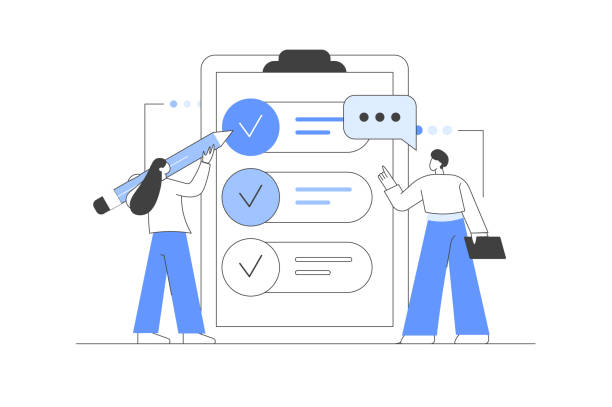
Keywords are the backbone of any successful SEO strategy and play a pivotal role in SEO-optimized website design.
Finding the right keywords means accurately understanding what phrases your target audience enters into search engines to find your products or services.
This specialized process involves in-depth research to identify high-volume keywords with reasonable competition.
Keywords can be short and general (e.g., “website design”) or long and specific (e.g., “SEO-optimized website design for small businesses in Tehran”).
Proper use of keywords goes beyond simply including them in the text; they must be naturally incorporated into titles, subheadings, meta descriptions, and throughout the content.
Overuse or unnatural use of keywords (keyword stuffing) not only doesn’t help but can also harm your site’s ranking.
For each page of your website, you should determine one primary keyword and several related secondary keywords.
This guidance helps you organize your content around these keywords and show search engines exactly what your content is about.
Analyzing user behavior and their search intent is also crucial in keyword selection, as search engines are increasingly focusing on understanding the user’s real need.
This optimization approach helps you rank your website pages for the phrases users are truly looking for.
Technical Website Structure and On-Page Optimization
![]()
The technical aspects of SEO-optimized website design are often overlooked, yet they are critically important for site ranking.
Your website’s technical structure should allow search engines to easily crawl and index it.
This specialized section includes various elements, such as site loading speed, which is one of Google’s most crucial ranking factors.
Websites that load quickly provide a better user experience and have lower bounce rates.
Mobile-friendliness is also vital, as a significant portion of searches are conducted via mobile devices.
Google uses a Mobile-First Indexing approach, meaning it prioritizes the mobile version of your site for indexing and ranking.
XML Sitemaps and robots.txt files are also important tools that help search engines understand your site’s structure and find important pages.
Using HTTPS (secure protocol) instead of HTTP is also a ranking factor and enhances your site’s security.
Implementing Schema Markup can also help search engines understand specific page content, leading to the display of Rich Snippets in SERP.
This table shows some of the most important technical on-page SEO factors:
| Technical Factor | Explanation of Importance |
|---|---|
| Site Loading Speed | User experience and Google ranking factor |
| Mobile-Friendliness | Essential for Mobile-First Indexing and mobile users |
| Use of HTTPS | Security and ranking signal |
| XML Sitemap and Robots.txt | Helps search engines crawl and index better |
| Optimized URL Structure | Readability for users and search engines |
| Internal Linking | Strengthens PageRank and user experience |
These elements ensure that the foundation of your SEO-optimized website design is strong and stable.
The Importance of Quality Content in SEO

After reviewing the technical infrastructure, it’s time for content, where the phrase “content is king” holds true more than ever.
In an SEO-optimized website design, high-quality, relevant, and valuable content not only attracts users but keeps them engaged.
Content should address user needs and questions and provide added value.
This is an analytical and explanatory approach that emphasizes Google’s E-A-T principle (Expertise, Authoritativeness, Trustworthiness): your content must be written by an expert, be authoritative, and trustworthy.
This means using accurate information, citing sources, and employing a professional tone.
Long-form content that delves deeply into a topic often performs better in SEO, as it can be a sign of expertise and comprehensive topic coverage.
However, content length alone is not enough; it must be structured, organized with subheadings, lists, and images for better readability.
Regular content updates also show search engines that your site is active and dynamic.
Strictly avoid duplicate content, as it can severely harm your site’s ranking.
The goal is to produce content that is not only optimized for search engines but also provides an excellent user experience, encouraging users to stay longer on the site and interact with it.
Content quality directly affects bounce rate, dwell time, and ultimately, your SEO ranking.
Did you know that customers’ first impression of your company is your website? Multiply your business’s credibility with a powerful corporate website from Rasawweb!
✅ Custom and eye-catching design tailored to your brand
✅ Improved user experience and increased customer attraction
⚡ Get a free consultation!
User Experience and Its Impact on Site Ranking
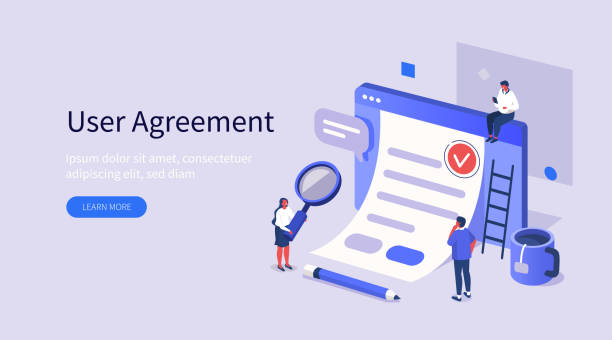
User Experience (UX) and User Interface (UI) have increasingly become key factors in SEO-optimized website design.
Google aims to provide the best possible experience to its users, and this includes directing them to websites that are easy and enjoyable to use.
Therefore, improving UX can directly impact your SEO ranking.
Page loading speed, as mentioned earlier, is part of UX and is directly related to Google’s Core Web Vitals.
Other elements include responsive design, which ensures your website displays correctly on any device, from desktops to mobiles and tablets.
Easy and intuitive navigation is one of the most important UX factors.
Users should be able to easily find what they are looking for.
This includes clear menus, appropriate internal links, and a logical structure for pages.
Content legibility is also important; using appropriate fonts, sufficient text size, suitable color contrast, and enough white space between paragraphs all contribute to a better reading experience.
A website with good UX typically has a lower bounce rate and higher dwell time.
These signals indicate to Google that users found your content useful and engaging, which in turn can improve your site’s ranking.
An analytical approach to UX helps you identify and address your site’s weaknesses, while practical guidance on improving navigation and visual design leads to a more optimized website for both users and search engines.
Ultimately, the better the user experience on your site, the higher the likelihood of their return and engagement with your content.
Link Building and Quality Backlinks
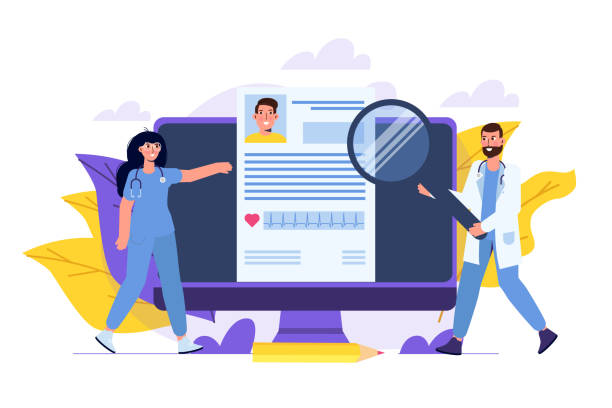
Alongside on-page and technical SEO, link building (or off-page SEO) is another backbone for SEO-optimized website design.
Backlinks, or incoming links from other websites to your site, are like recommendations that show search engines your site is authoritative and trustworthy.
The greater the number and quality of these backlinks, the higher your Domain Authority will be, and Google will consider your site more important for relevant topics.
But more important than quantity is the quality of backlinks.
A backlink from a reputable website relevant to your niche is worth far more than dozens of backlinks from irrelevant or spammy sites.
Link building strategies include creating shareable and valuable content, collaborating with bloggers and influencers, guest posting on other sites, and even broken link building on authoritative sites.
Anchor Text, or the text on which the link is placed, is also important; it should be relevant to the page it links to.
Furthermore, Internal Linking, which connects different pages of your site to each other, helps improve site navigation, distribute PageRank across pages, and assist search engines in discovering new pages.
This specialized and informative section teaches you how to create a strong and natural backlink profile for your site by adhering to ethical principles (White Hat SEO), and to avoid illicit methods (Black Hat SEO) that can lead to penalties from Google.
In today’s competitive world, a smart link building strategy can make a significant difference in your ranking.
Essential Tools for SEO Analysis and Improvement
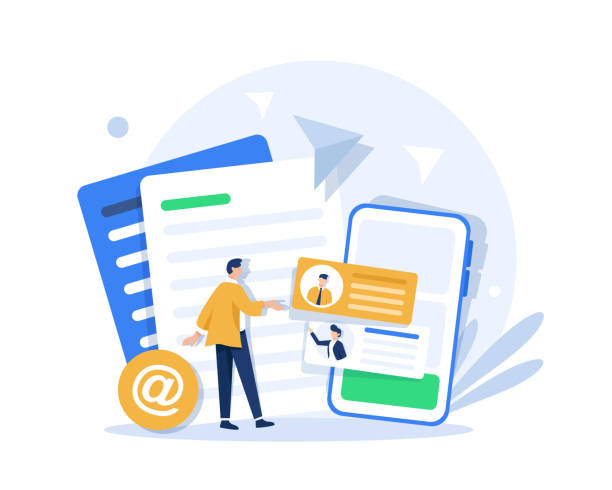
After implementing the principles of SEO-optimized website design, the next step is continuous performance monitoring and analysis.
Without the right tools, you practically cannot measure the success of your SEO strategies and identify weaknesses.
This educational and specialized section introduces you to some of the most vital tools that every SEO professional should use.
Google Search Console is a free and essential tool from Google that provides vital information about how your site appears in search results, errors, keyword performance, and incoming and outgoing links.
Google Analytics is also a free tool for analyzing website traffic, user behavior, traffic sources, and conversion rates.
More powerful paid tools like Semrush and Ahrefs offer advanced capabilities such as competitive keyword research, competitor backlink analysis, technical SEO audits, and keyword rank tracking.
For keyword research, Ubersuggest and Keyword Planner (from Google Ads) are also good options.
These tools help you discover new opportunities, identify and resolve issues, and continuously improve your SEO performance.
Using these tools is an integral part of the lifecycle of an SEO-optimized website.
| Tool Name | Primary Use | Free/Paid |
|---|---|---|
| Google Search Console | Monitoring site performance in search, errors, indexing | Free |
| Google Analytics | Traffic analysis, user behavior, traffic sources | Free |
| Semrush | Keyword research, competitor analysis, technical SEO, link building | Paid (with free trial) |
| Ahrefs | Backlink analysis, keyword research, site audit | Paid (with free trial) |
| Ubersuggest | Keyword research and content ideas | Free (with paid features) |
These tools give you a comprehensive view of your SEO-optimized website design performance.
New Trends in SEO-Optimized Website Design
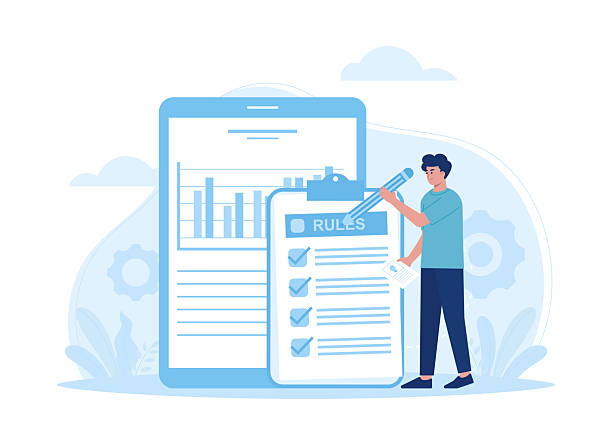
The world of SEO is rapidly changing, and what was effective yesterday may not be today.
Keeping up with new trends in SEO-optimized website design is crucial for maintaining a competitive edge.
This informative and analytical section addresses some of the most important changes and trends that need attention.
Voice search is on the rise, and optimizing for it requires a different approach; users use conversational and question-based phrases.
Therefore, your content should provide direct and natural answers to questions.
Artificial intelligence (AI) plays an increasingly significant role in Google’s algorithms (such as RankBrain and BERT), helping search engines better understand user intent and provide more relevant content.
This means your content must be rich, relevant, and in-depth.
Video SEO has also gained importance, given the increased consumption of video content.
Optimizing the title, description, tags, and even subtitles of your videos can help improve their ranking in search results.
Local SEO for businesses with local audiences is very important; optimizing for Google My Business and using local keywords are crucial steps.
Semantic Search and focusing on entities rather than just keywords indicate that Google is seeking a more comprehensive understanding of the topic and the connections between concepts.
These trends show that SEO is no longer just about keywords, but about a deeper understanding of user needs and providing the best possible answers to them.
Being aware of these changes and adapting your SEO-optimized website design to them is the key to future success.
Are you dissatisfied with the low conversion rate of visitors to customers on your e-commerce site?
Solve this problem forever with professional e-commerce website design by Rasawweb!
✅ Increase visitor-to-customer conversion rate
✅ Create an excellent user experience and build customer trust
⚡ Get a free consultation
Common Challenges and Mistakes in SEO Design

Despite all available guidance and tools, many businesses still make common mistakes in SEO-optimized website design that can nullify their efforts.
This thought-provoking and guiding section examines some of these challenges and mistakes so you can avoid them.
One of the biggest mistakes is ignoring SEO in the early stages of website design.
Often, SEO is considered an afterthought, and design and development teams build the site without considering SEO implications.
This approach can lead to deep technical problems that will be difficult and costly to fix in the future.
Another mistake is Keyword Stuffing.
Instead of focusing on content quality and naturalness, some try to trick search engines by stuffing text with keywords, which will have the opposite effect.
Thin Content is also a major challenge; pages with little content, copied content, or no added value rarely rank well.
Ignoring User Experience (UX) and site speed are also common mistakes.
While your site might be technically optimized, if users cannot easily navigate it, bounce rates will increase, sending negative signals to Google.
Failure to create proper internal links, broken links, and neglecting mobile compatibility can also harm ranking.
Other common mistakes include not regularly updating content, overlooking the importance of quality backlinks, and failing to analyze SEO data with tools like Google Analytics and Search Console.
Understanding and avoiding these mistakes is a crucial step towards creating a truly SEO-optimized website and prevents wasted time and resources.
The Future of Web Design and SEO
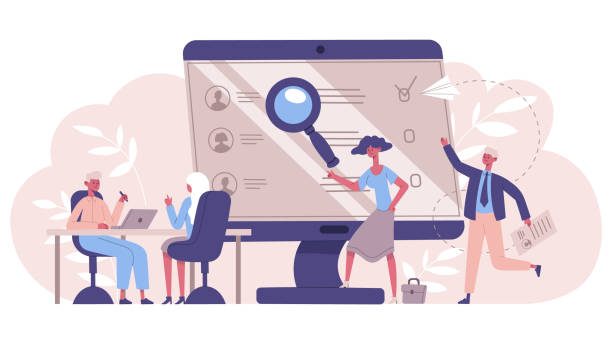
As technology and user expectations evolve, the future of SEO-optimized website design is constantly changing.
This engaging and analytical section helps us gain a perspective on what lies ahead.
It is predicted that search engines will become increasingly intelligent, focusing on a deeper semantic understanding and the true intent behind searches.
This means your content should be optimized not just for keywords, but for concepts and entities, providing comprehensive and satisfying answers.
Focus on user and user experience will become even more prominent.
Speed, ease of use, and interaction will be key factors in a website’s success.
Google’s algorithms will increasingly value user behavioral signals (such as bounce rate, dwell time, and click-through rate).
Artificial intelligence and machine learning will play a more significant role in SEO analysis and optimization.
SEO tools will become smarter, providing deeper insights for optimization.
Voice and visual search will also continue to grow, and visual SEO will become a critical area, especially with the emergence of augmented reality and virtual reality.
Ultimately, Google’s “helpful content” concept, which emphasizes genuinely useful and valuable content for users, will be the primary basis for ranking.
Instead of trying to trick algorithms, success in SEO will depend on producing content that truly addresses user needs and provides an unparalleled experience.
This approach signifies an SEO-optimized website design that is always learning and adapting to changing user needs and technology, rather than a one-time project.
Frequently Asked Questions
| Question | Answer |
|---|---|
| What is SEO-optimized website design? | SEO-optimized website design means designing and coding a website that is technically, content-wise, and structurally optimized so that search engines can easily crawl, index, and assign a higher rank to it in search results. |
| Why is SEO-optimized website design important? | Its importance lies in increasing website visibility in search engine results (like Google), attracting more organic traffic, improving user experience, and ultimately increasing conversion rates (sales or desired actions). |
| What are the most important technical SEO factors in website design? | High loading speed, responsiveness (Mobile-Friendly), proper URL structure, use of SSL certificate (HTTPS), XML sitemap, and robots.txt file. |
| What is the impact of responsiveness (Responsive Design) on SEO? | Since most searches are done via mobile, Google prioritizes responsive sites. Responsive design improves user experience and reduces bounce rate, both of which help SEO. |
| How does site loading speed affect SEO? | Loading speed is an important ranking factor for Google. Slow websites lead to poor user experience, increased bounce rate, and reduced ranking in search results. |
| What is the role of URL structure in SEO? | Short, readable URLs that include relevant keywords help both users and search engines better understand the page’s topic, which positively impacts SEO. |
| What is the importance of using Title Tags and Meta Descriptions in SEO design? | These tags provide information about the page’s content to search engines and users. Optimizing them with appropriate keywords increases click-through rate (CTR) and improves content understanding by search bots. |
| What is the importance of Image Optimization in SEO? | Reducing image size for faster site speed, using descriptive Alt tags (including keywords) to describe images to search engines, and increasing the chance of appearing in Google Image Search. |
| How does Internal Linking help SEO? | Internal linking helps search engines better understand the site structure, distributes authority (PageRank) throughout the site, and directs users to relevant pages, which improves user experience and reduces bounce rate. |
| What is the relationship between User Experience (UX) and SEO? | Google prioritizes websites that offer a good user experience. Attractive visual design, easy navigation, readable content, and high speed all contribute to improving UX, which in turn leads to a reduced bounce rate, increased time on site, and positive signals to search engines. |
And other services of Rasa Web Advertising Agency in the field of advertising
Smart Conversion Rate Optimization: Designed for businesses seeking to attract customers through intelligent data analysis.
Smart Marketplace: A professional solution for improving SEO ranking with a focus on user experience customization.
Smart Digital Advertising: An innovative platform for improving website traffic increase with intelligent data analysis.
Smart Social Media: Designed for businesses seeking to attract customers through intelligent data analysis.
Smart Conversion Rate Optimization: A dedicated service for growing user engagement based on Google Ads management.
And over hundreds of other services in the field of internet advertising, advertising consultation, and organizational solutions
Internet Advertising | Advertising Strategy | Advertorial
Resources
Advanced SEO Guide
Website Design Tips
Online Success Strategies
SEO and Web Development
❓ Rasaweb Afarin Digital Marketing Agency, expert in promoting your business by providing comprehensive SEO services, targeted advertising, and professional website design.
📍 Tehran, Mirdamad Street, next to Bank Markazi, Southern Kazeroon Alley, Ramin Alley No. 6

